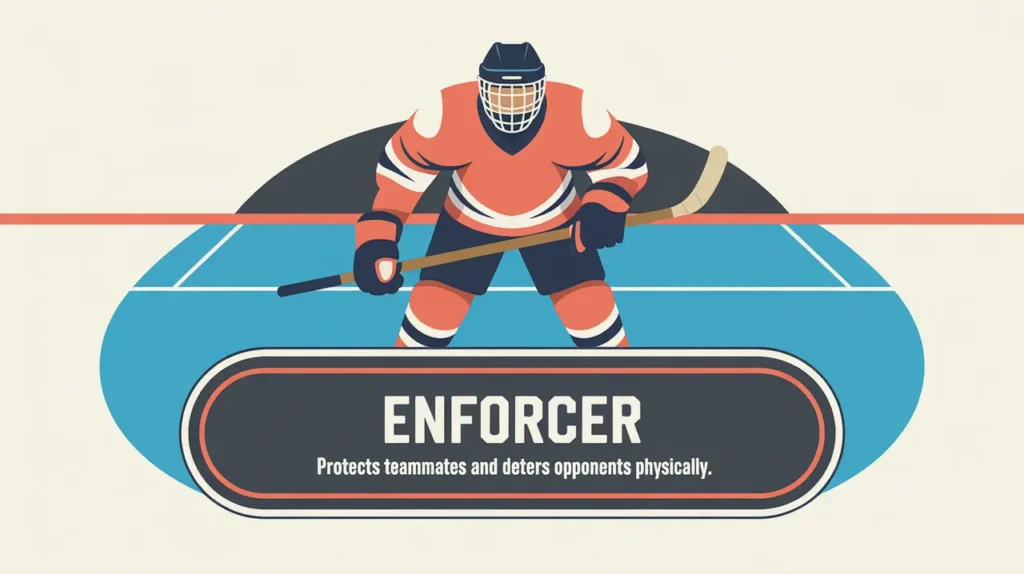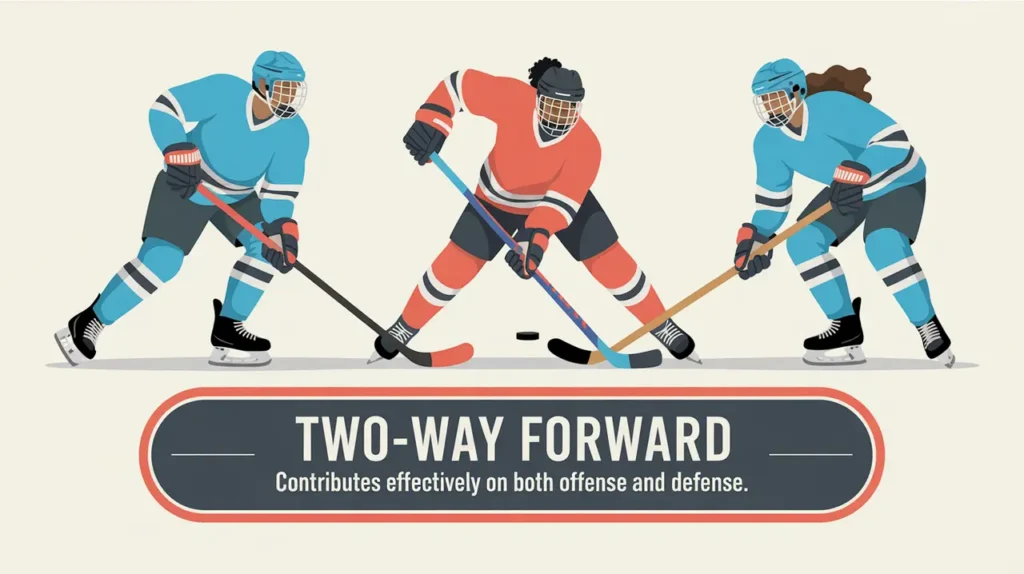Jim’s Intro to the Winger
Hi folks, Jim here, the only commentator who once played wing in a recreational league and made my entry vaulted from the ceiling with feathers strapped to my arms.
What is a winger?
A winger is a skater who plays along the left or right side of the ice, responsible for supporting the center on offense, attacking along the boards, pressuring defensemen on the forecheck, and covering their point in the defensive zone.
Wingers are often the goal scorers and spark plugs of a team, using speed, puck handling, and smart positioning to create and finish scoring chances.
How does it work?
Wingers balance offensive creativity with positional discipline on their respective sides of the ice:
Offensive Zone Play
- Wingers attack along the boards, cycle the puck with linemates, and create passing options for the center.
- They look for open ice in the slot for quick shots, or set up behind the net to feed the middle.
- Strong wingers keep defenders pinned and sustain offensive pressure.
Neutral Zone Transitions
- Wingers stretch the ice by skating wide, opening lanes for the center or defense to carry the puck up.
- They support breakouts by being available on the boards for outlet passes.
- Good wingers read plays to time entries perfectly and avoid offside.
Defensive Zone Coverage
- Wingers cover the opposing defensemen at the blue line, preventing easy point shots.
- They support their defense and center down low if needed, but usually focus on shutting down the points and starting the breakout.
- Smart positioning here sets up quick counterattacks.
Forechecking and Pressure
- On the forecheck, wingers pressure defensemen to force turnovers and disrupt breakouts.
- Fast, relentless wingers can make life miserable for opposing teams trying to exit their zone.
Special Teams
- On power plays, wingers are often primary shooters or playmakers on the half-wall.
- On penalty kills, they clog lanes, pressure points, and look for shorthanded breakaways.
Common Situations Involving Wingers
- Breakouts Along the Boards: Receiving outlet passes to start rushes.
- Zone Entries: Timing wide routes to create passing options.
- Slot Positioning: Finding soft spots in coverage for quick shots.
- Forechecks: Forcing defensemen into rushed decisions.
- Covering the Point: Preventing shots and sealing off the blue line in the defensive zone.
How do you make good decisions with it?
Good winger play comes from timing, positioning, and reading the flow.
- Stay Wide on Breakouts: Create space for smoother transitions.
- Time Zone Entries: Don’t cross the line early; support the puck carrier.
- Cover Your Point: Don’t drift too low and leave the blue line exposed.
- Attack Soft Spots: Move intelligently off the puck to find dangerous scoring areas.
- Pressure with Purpose: Forecheck in sync with your linemates rather than chasing.
How do you master it?
Mastering the winger position requires strong skating, quick decision-making, and sharp offensive instincts. Elite wingers know when to burst into space, when to support, and when to finish. They work on board battles, shooting accuracy, puck protection, and their ability to read defensive coverage. Off the puck, their movement is often what opens up scoring chances for the entire line.
What does it look like when done right?
A skilled winger times their breakout perfectly, receives a clean pass on the boards, accelerates through the neutral zone, cuts wide, and threads a cross-ice pass for a tap-in goal. In the defensive zone, they shut down point shots and flip the puck out cleanly to start a rush. On the forecheck, they pounce at the right moment, creating turnovers that swing momentum.
Commentator’s Corner
Jim’s Take
When a winger is dialed in, they make the game look fast and simple. They stretch the ice, force turnovers, and finish plays with style.
Parent Tip
If your player plays wing, emphasize board work, skating speed, and smart positioning. These skills are the foundation of strong winger play.
Player Tip
Think about how you can make space for your teammates even when you don’t have the puck. Great wingers are as dangerous off the puck as they are with it.
A Final Thought
Wingers bring pace and punch to the game. When played well, the position connects structure with creativity, turning smart movement and sharp execution into goals and momentum shifts.









